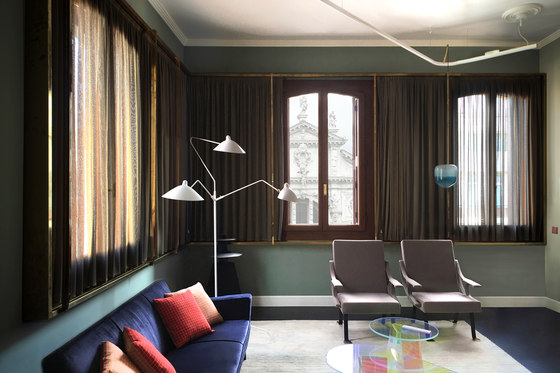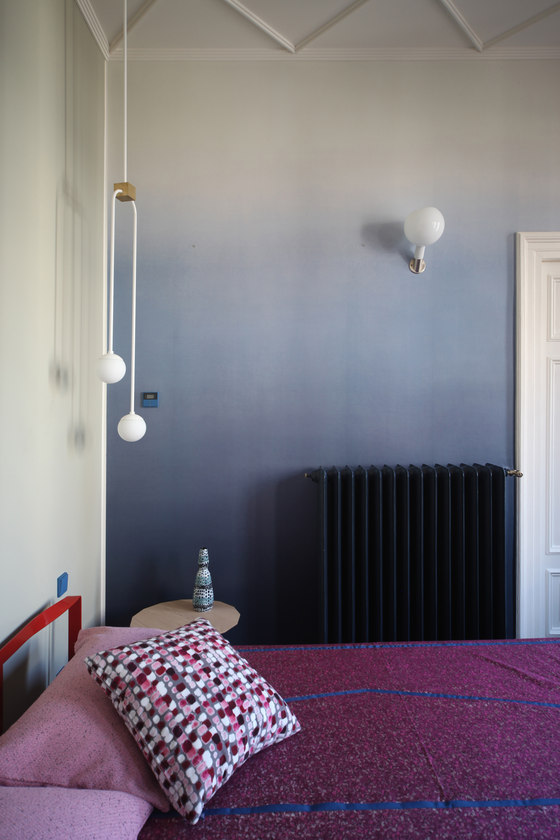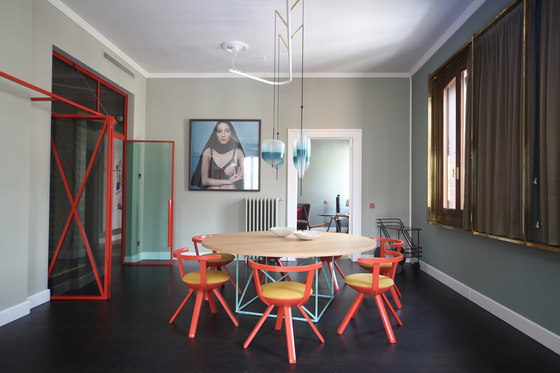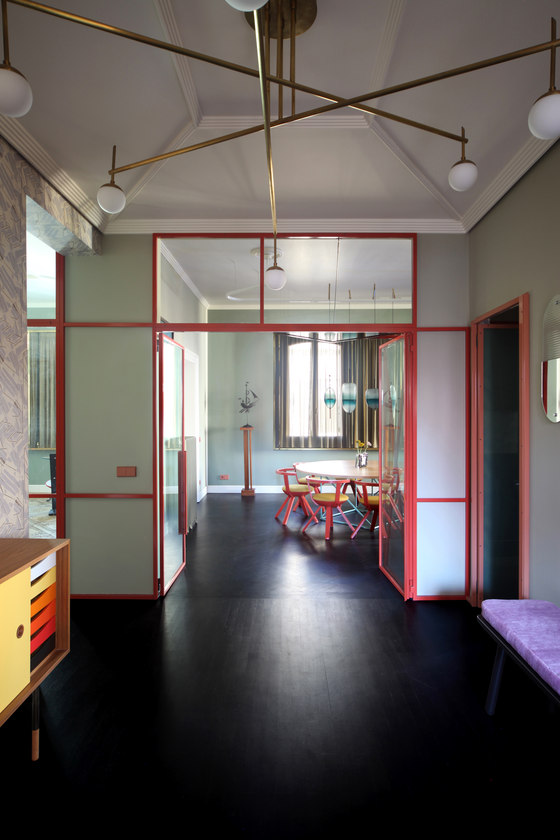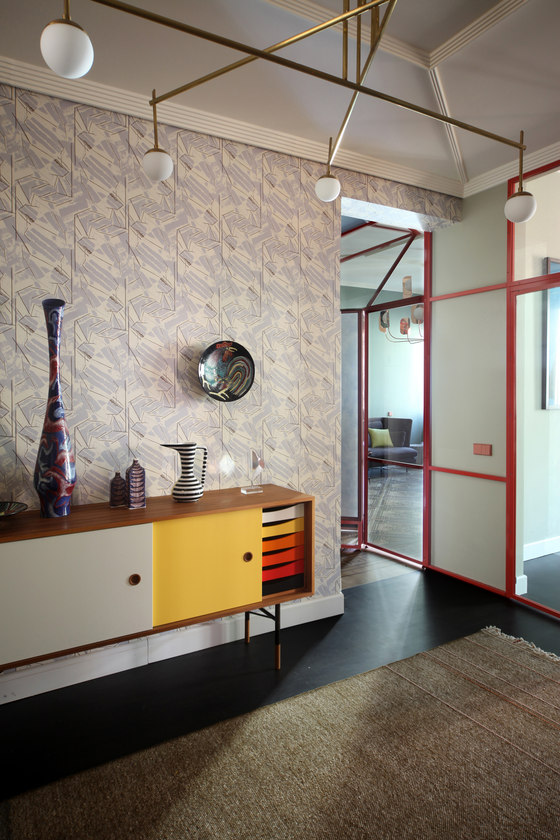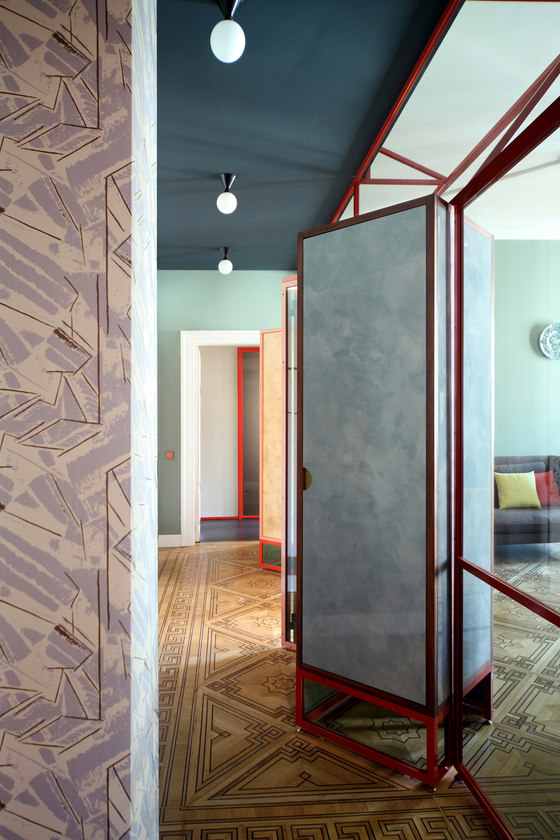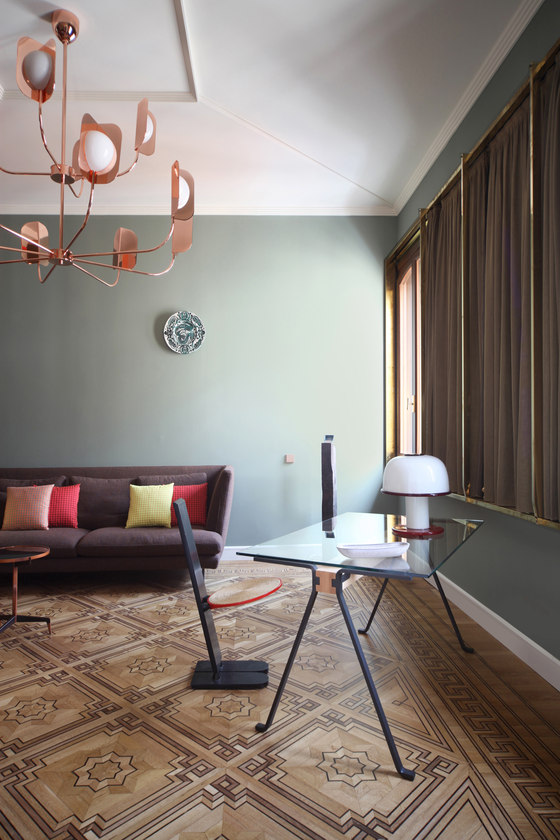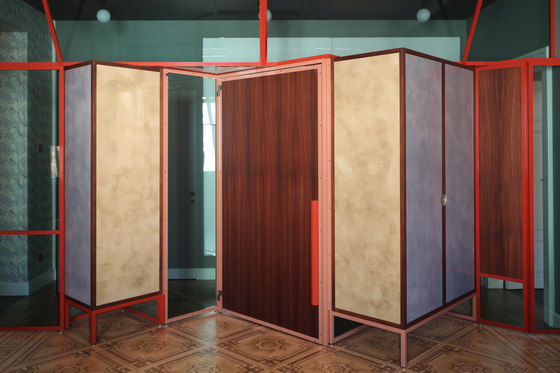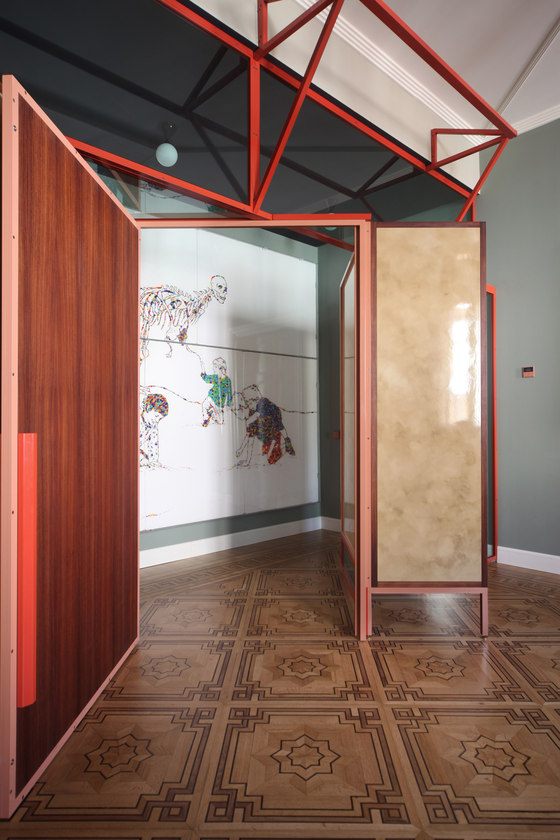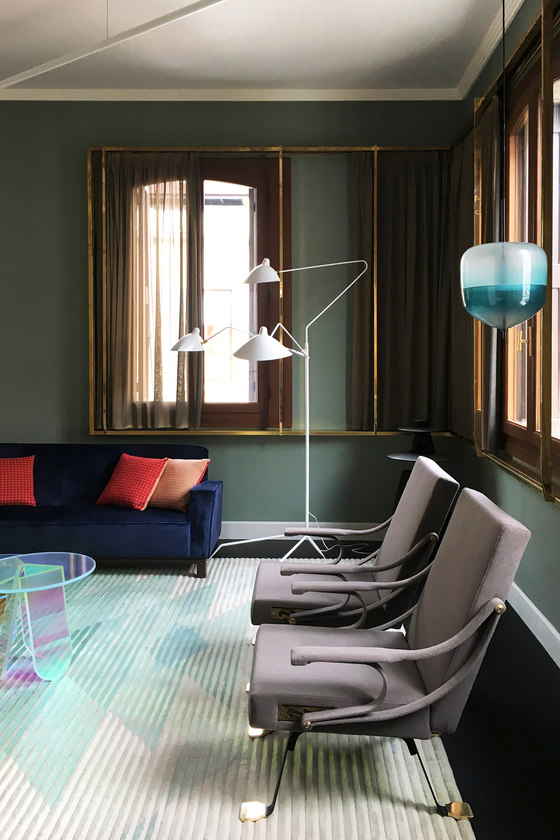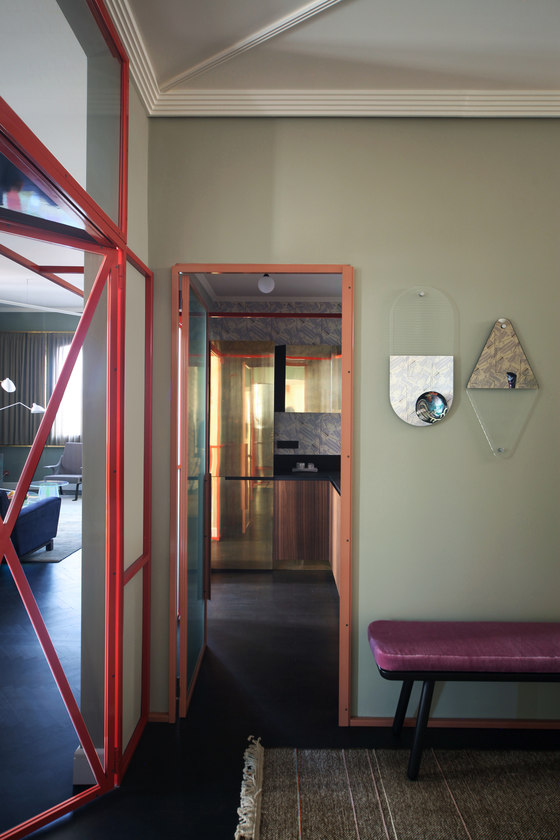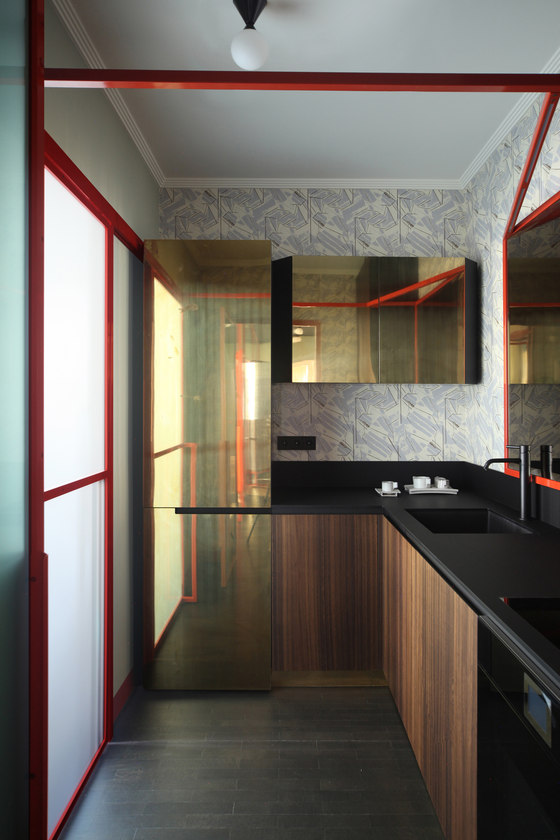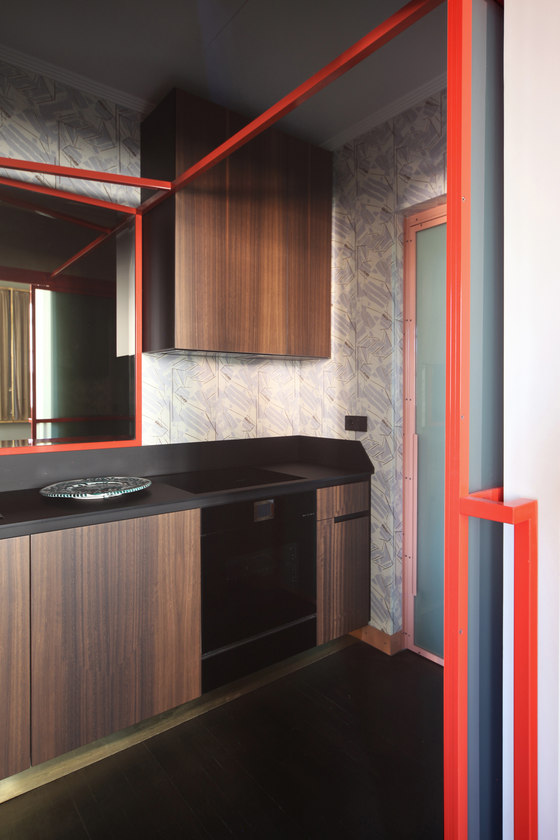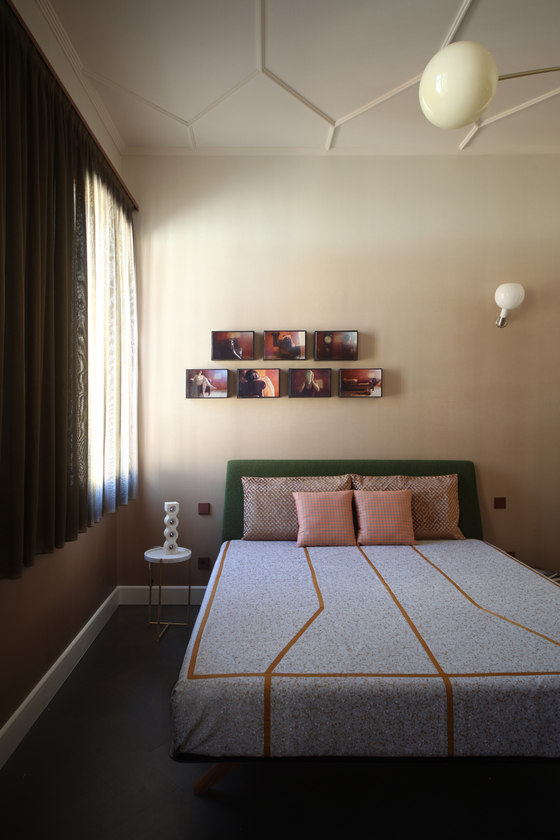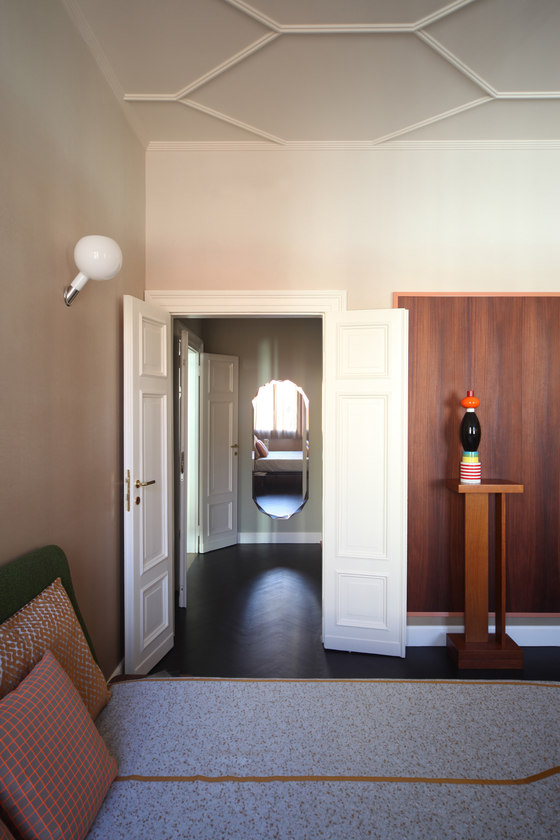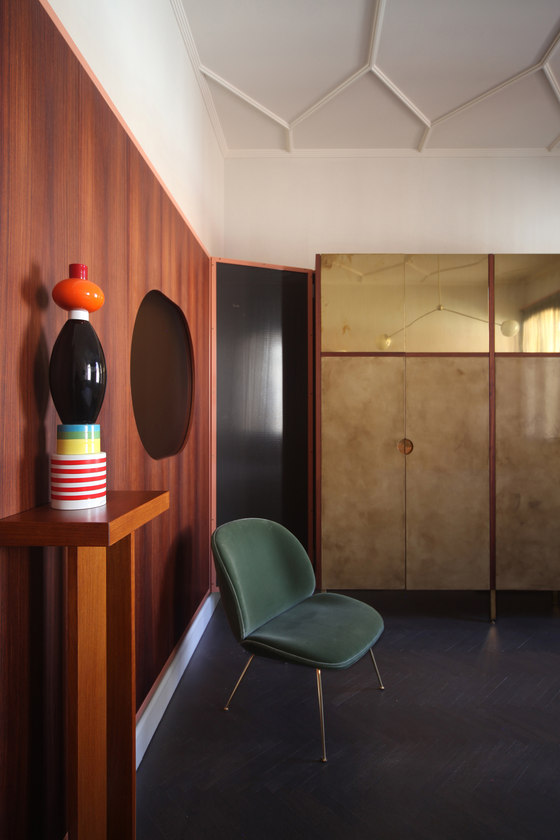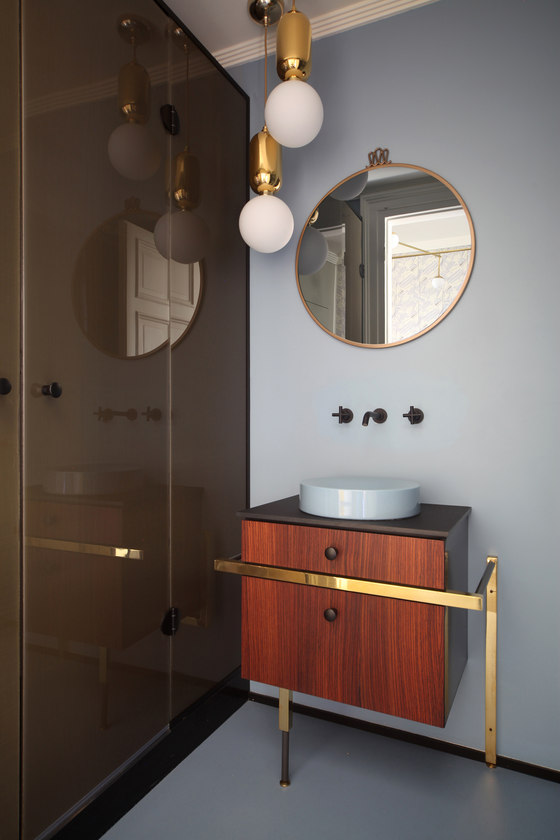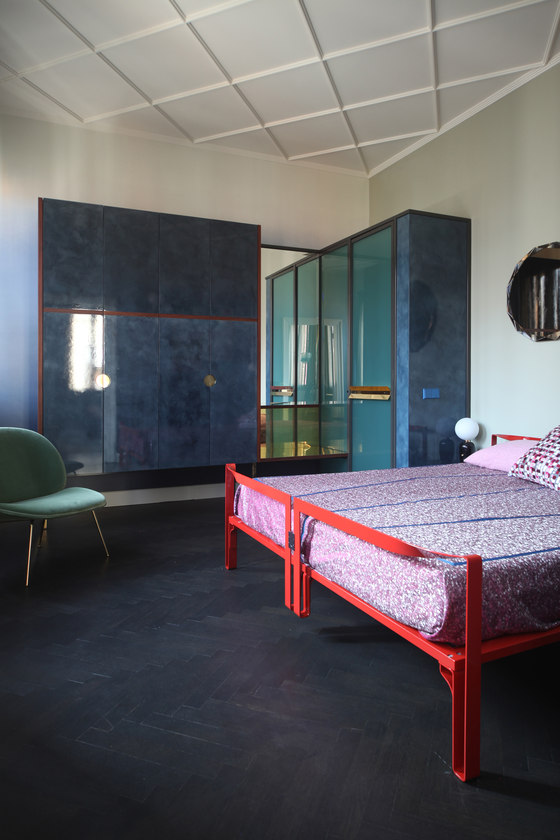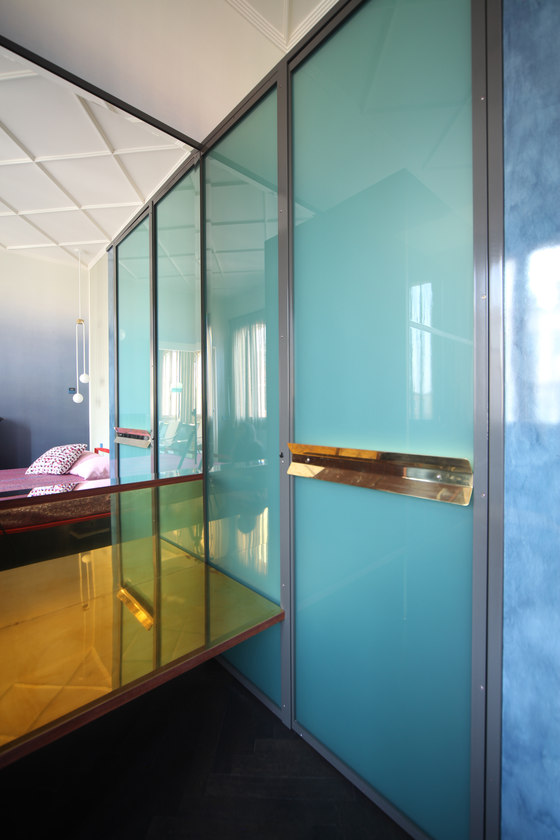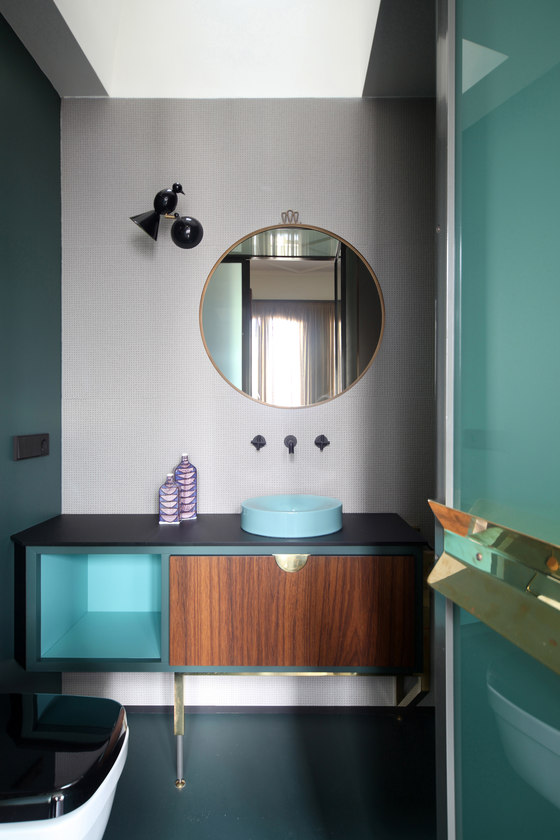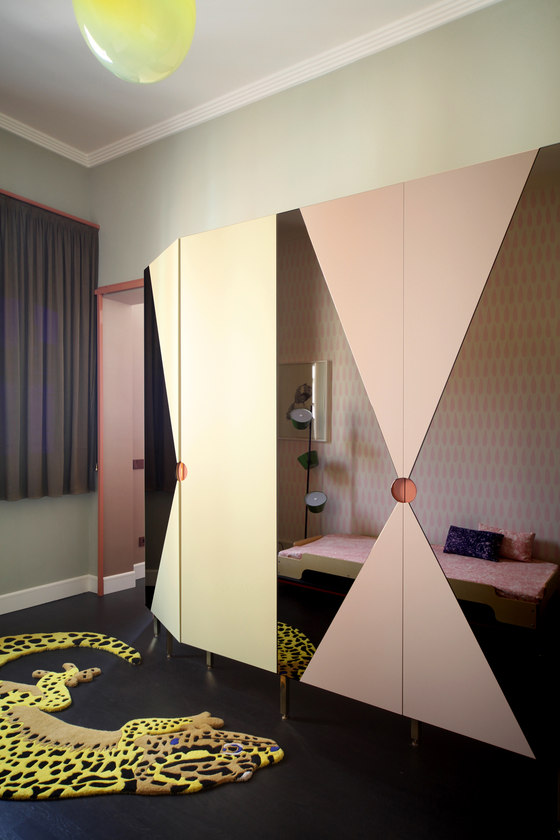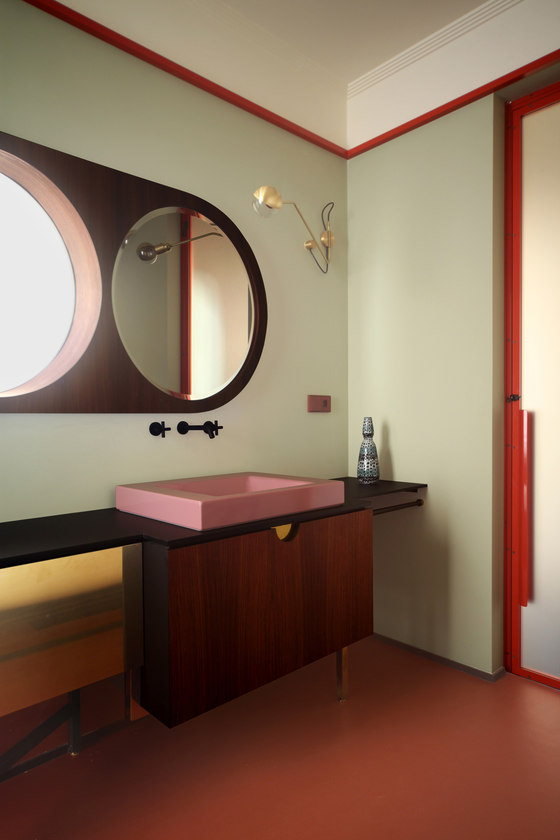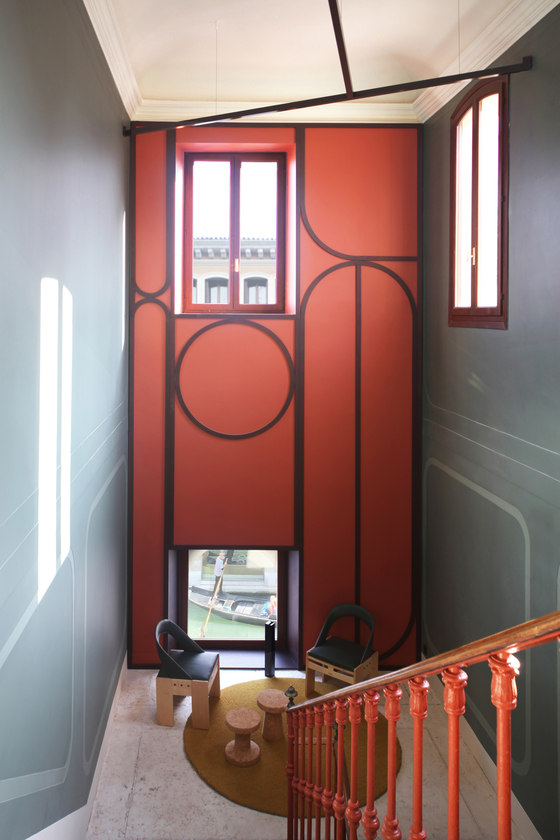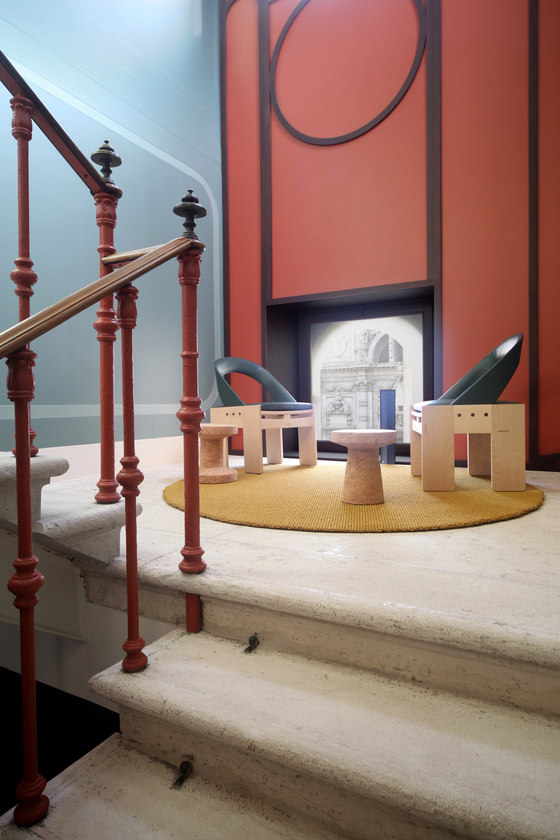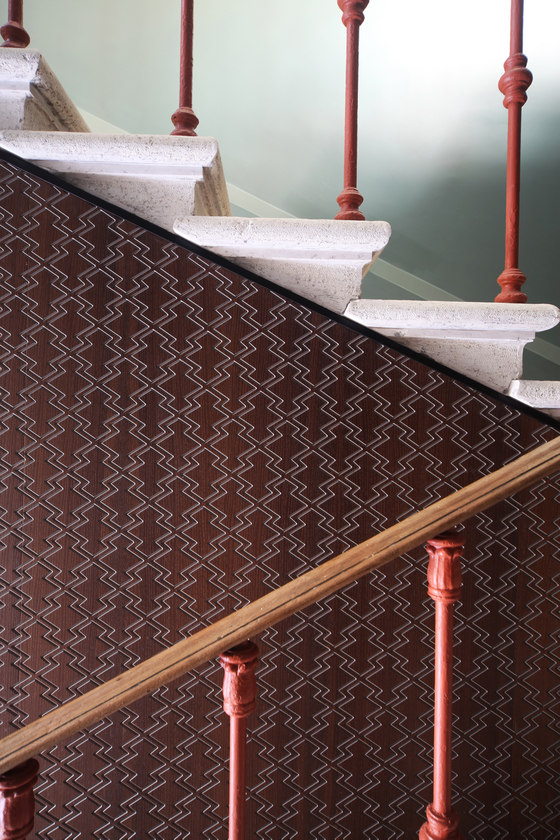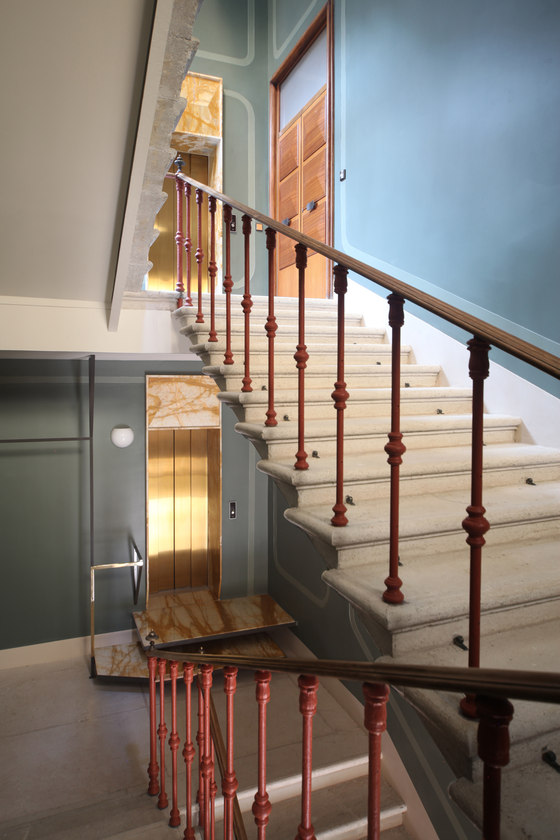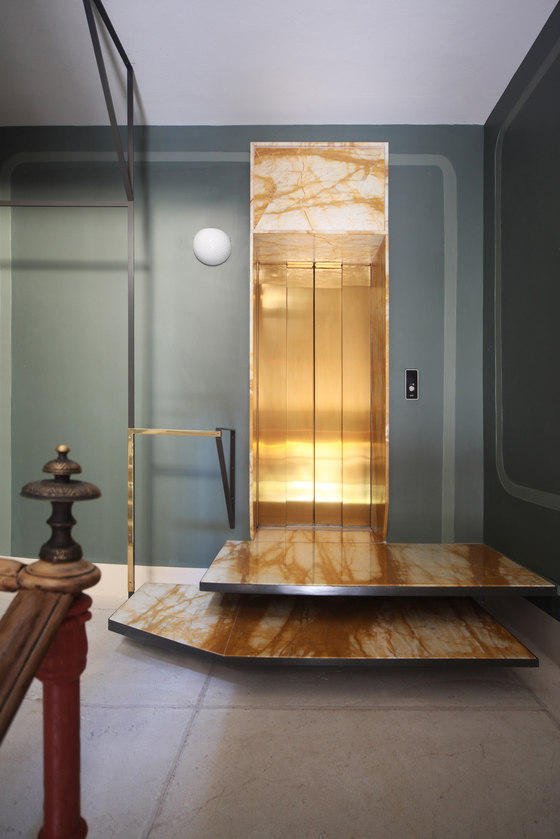The latest project by Andrea Marcante and Adelaide Testa is in the most decorated city in the world, where an extraordinary architectural past struggles to absorb contemporary developments: a project for the renovation of a 19th-century building facing a small canal in Sestiere San Marco. The project involved both the communal areas, like the entrance hall and the vertical access, and the residential interiors, of which this is the first completed apartment.
Prior to the project the building was completely without decorative-architectural features appropriate to its character. The design work thus began with a reinterpretation of the "inside/outside" relationship, starting with the vertical circulation, where the graphic design of the new paneling surrounding the staircase alludes to the image of the exterior facades, while the “inhabited” landing foreshadows the intimacy of the apartments.
The project for this apartment develops through diaphragm-dividers with structures in painted metal and brass, infill elements in green glass and wooden panels treated with Venetian stucco: inspired by the intervention of Carlo Scarpa at Ca’ Foscari, the dividers conserve natural lighting even in the areas without windows.
An initial partition creates a relationship between the entrance with the living room and its openings to the outside, on the one hand, and a new corridor crossing the studio, on the other, keeping the original design of the parquet flooring with inlaid "squares"; a second partition separates the bedroom from the adjacent bathroom, functioning not only as the bathroom entrance but also as a closet/dressing room for the bedroom.
Inside the rooms, the relationship between the windows and the Venetian landscape is reinforced by a system of brass frames with gilded curtains of metal screen, that act to determine precisely revised openings towards the outside in a sort of continuous ribbon window through all the spaces. A new horizontal view perspective that is also seen in the support structure of the lamps in Murano glass in the living area, whose hues evoke the reflection of the city in its canals at twilight.
Through the glass of the lamps, the wallpapers with a shaded effect, the colors of the walls, all the way to the choice of the furnishings (like the glass tables or the iridescent carpet), the project sets out to interpret and incorporate the Venetian landscape, the lagoon and its colors.
A project that on every scale, from the definition of the architectural elements to the choice of lights and furniture (many of which are by Carlo Scarpa and his son Tobia) and the furnishing complements (such as the bedspreads made with Rubelli fabrics, capable of suggesting the Venetian tradition of terrazzo floors), sets out to narrate “another” Venice.
While for Proust the garments of Mme de Guermantes designed by Mariano Fortuny and steeped in Venetian history gave that woman a truly extraordinary mien, a work of interior architecture in this city, more than elsewhere, cannot help but address the relationship with its history (even the most recent history) and the context.
Marcante-Testa (UdA Architects)
Mattia Inno, Giada Mazzero and Valentina Negro
